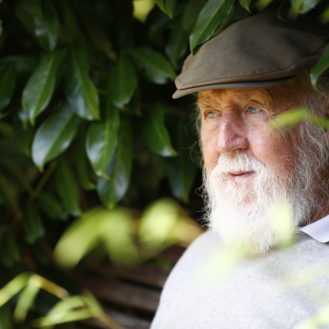Mama is another horror film “presented by” creep master Guillermo del Toro. So, it’s no surprise that Andrés Muschietti’s new year horror, Mama, resembles 2011’s Don’t Be Afraid of the Dark, another film that was “presented” by del Toro.
That’s going to be either a deal maker or breaker to those who saw the Katie Holmes driven flick about small, scary creatures that occupy a looming and ominous house. As someone who liked Don’t Be Afraid of the Dark, I enjoyed Mama through and through and ate every bit of it up.
It’s hard not to ignore the similarities between both horrors since both lead characters are women who are new to motherhood and adapt protective instincts. In Mama’s case, Jessica Chastain plays a punk rocker girlfriend-turned-Mom as her boyfriend (played by Nikolaj Coster-Waldau) finds the whereabouts of his brother’s long lost children and adopts them. The two off-kilter little girls are played exceptionally by Megan Charpentier and Isabelle Nélisse.
Even if you take the similarities to Don’t Be Afraid of the Dark out of the equation, Mama goes through the motions of a regular ole’ scary movie. Kids with a supernatural background, a doctor that doesn’t believe the suspicions and stories Chastain’s Annabel tells him, and unfortunate circumstances that inevitably pit Annabel in situations by herself to face pure evil that creeps behind doors and hides in closets.
There’s a saying that gets tossed around when musicians cover well known songs. “It’s not particularly the music that makes the song, but how the artist plays the notes”. The reason why Muschietti’s film works on a technical level and with its scares is that he (along with his other two screenwriters Neil Cross and Barbara Muschietti) knows how to spook us and tell a good story using techniques that are now considered “old fashioned”.
The scares vary from creepy weirdness to jump scares. The weirdness stems from the film playing with shadows and your imagination. In a memorable scene where young Lilly plays with “Mama”, we only see a shadow of what could be the spirit out of the corner of our eyes. When her older sister Victoria looks at “”Mama”, she always sees the unknown through her own distorted view of reality – a blurry one without her glasses.
With the jump scares, Muschietti lets us take in the sight before something lunges at us or evil makes a hasty move. He doesn’t catch his audience off guard by using cheap scare tactics. It’s the type of jump scare that’s solely missed nowadays.
We do eventually see what “Mama” looks like during the final stretch. Being that we live in a moviegoing world where audiences can’t be teased for a whole film, I don’t consider that a spoiler.
However, by using fantastic prosthetics and a well-timed reveal, the sight still catches us by surprise. It’s a payoff that definitely qualifies for “creepy weirdness”, and it may squeeze some nervous laughter out of you. But, that’s because you’ve seen nothing like “Mama” before.
If there’s anything missing from Mama, it’s that visual grit of a Grimm’s fairy tale – something that was done so well in del Toro’s past films. Mama has glorious cinematography with soft images that feel like they’ve been illustrated right out of a bleak bedtime story, but other shots feel almost overly-lit.
For you Grumpy Gus’s who’ll be watching Mama with crossed arms and skepticism, you may not jump out of your pants during the film and you may be able to call when something “frightening” is going to happen. Horror’s subjective after all. But, that image of “Mama” sure resonates.
I can testify. Ever since seeing Mama, I’ve had a couple of nightmares featuring a shadowy figure. I will be “presenting” Muschietti and del Toro with my sleep therapy bills in the mail.





Leave a comment